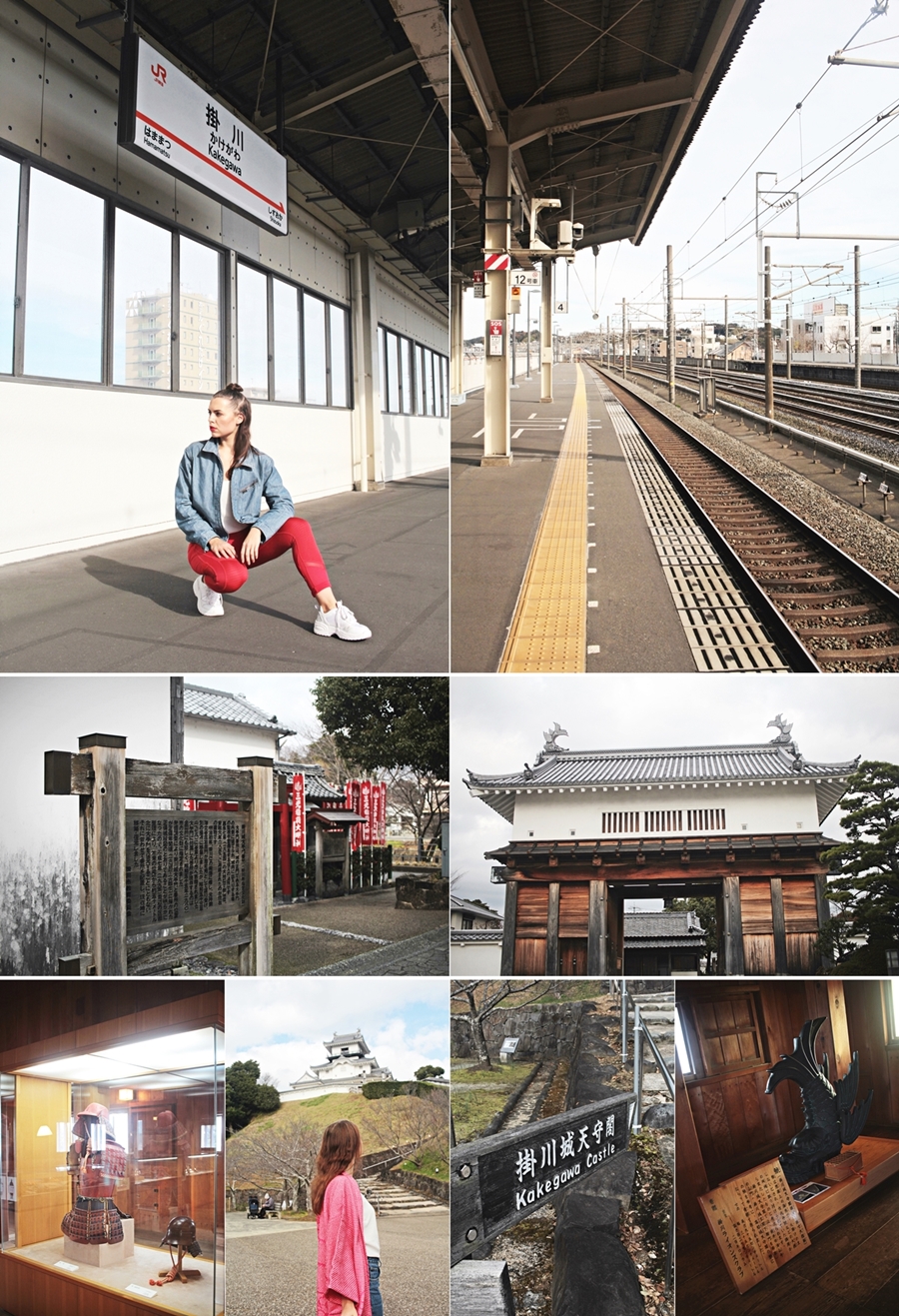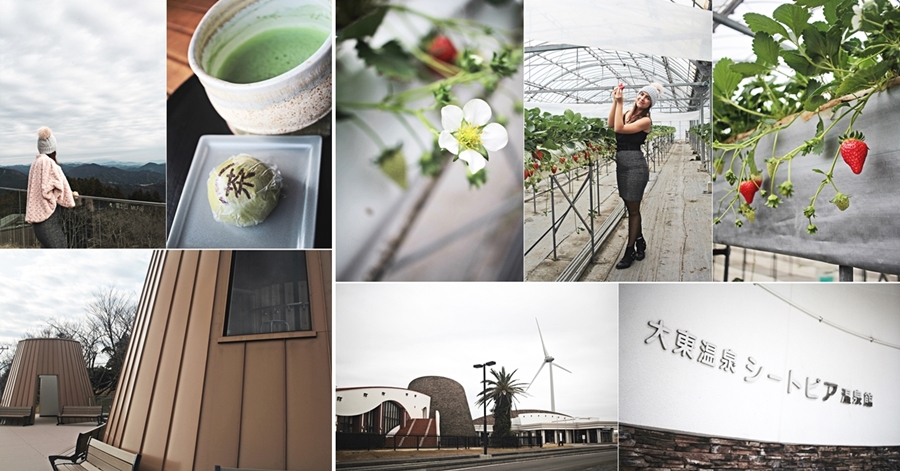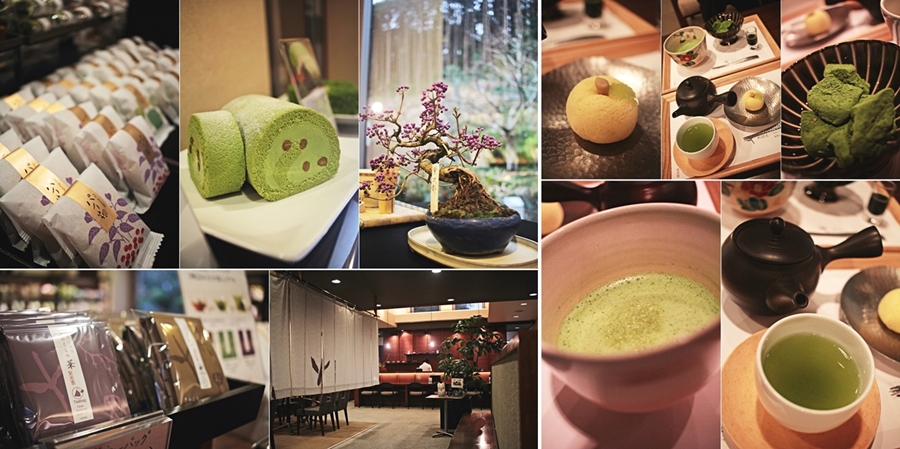Werbung/Press Trip
It´s been the 3rd time already that I traveled to Kakegawa city and while many assume Kakegawa to be only a small town, I always explore so much more. Kakegawa is modern and has also a luxurious travel offer. While the city is mostly known for it´s great tea culture, visitors can explore unique facilities and enjoy an unforgettable holiday.
After arriving in JR Kakegawa station, I made my way to the Kakegawa castle, which I also visited last year. I however wanted to try some new shootings in the castle and combined my stay with a tea ceremony and a kimono shooting. Kakegawa castle was built about 500 years ago. Due to war and earthquake the castle collapsed in 1869 and was rebuilt. The castle tower was the first one to be rebuilt with wood, all over Japan. All entrance fees go towards to the preservation of the palace and castle tower.
The Ninomaru Tea Room is located in the Kakegawa Castle Park. It is a traditional wooden sukiya-style building with a one-story, single-story roof. One can enjoy sencha and matcha from Kakegawa-cha, one of the leading producers in Japan. The tea is accompanied by locally made sweets. The Ninomaru Tea Room also hosts seasonal tea ceremony events such as the Tanabata Tea Party and the Otsukimi Tea Party.
For my latest visit I also explored some modern hotspots in Kakegawa which I didn’t know yet. One of them was the Italian style restaurant Atelier MOF which is an open kitchen with a full view of the entire cooking process. All ingredients are visible to the customers. In order to provide at a reasonable price, the menu is based on the "Omakase Course”. Omakase is the Japanese tradition of letting a chef choose one´s order. The word means "I will leave it to you." It's a fine tradition that gives the chef creative freedom and the customer a memorable dining experience.
Another amazing spot that I got to explore was the high fashion shop Cento Cose. The shop owner is regularly attending international Fashion Weeks and is also reselling Kakegawa cotton, which is used for top luxury brands. So, in some terms, one of you guys had been wearing something from Kakegawa already.
Since I visited Kakegawa during Christmas season, I also got to explore illuminations in town. Besides, I explored a small illumination after my visit at the Kakegawa Stained Glass Museum, which is the nation’s first public stained-glass museum. It houses a collection of approximately 70 pieces of stained glass from 19th century Victorian era England, as well as ten French rose windows. These high quality, quite sophisticated works were produced during the heyday of British stained-glass manufacturing, and they are representative of some of the highest quality techniques, and include works from some of the most prestigious stained-glass manufacturers of the era.
Less than 10 minutes away from Kakegawa station on the Tokaido Shinkansen in Shizuoka, lies a hidden gem, outdoor eateries and bars along a traditional Japanese eating street, beckoning you in for a bite and enticing you to stay for a drink. Discover the hidden food alley of Kakegawa. Honjin Dori (meaning Honjin street) has been welcoming guests from near and far in tiny alley full of treasures for ages. Nestled away in an alley only a short walk away from the main Shinkansen station in Kakegawa, Honjin Dori has a number of traditional eateries and bars that you might often see around train stations in Tokyo or Osaka, but in a casual outdoor setting. The name Honjin, goes back to the Edo period of Japan (1600-1864), and was the name of the local daimyo (feudal lord) who oversaw the area. In 2013, in cooperation with Kakegawa City Food Village, Honjin Dori was renewed and opened on August 25, 2013. There are currently 16 eateries and bars to choose from, with plans to increase that number to 20. Also, for those who might not be able to find suitable foods due to special diet restrictions, like veganism, I definitely recommend a visit and taking some photos. The area is super lovely and it´s fun to mingle with the locals.
In the evening I check in at the Kakegawa grand hotel, which is a hotel next to Kakegawa station with a total of 10 floors. The hotel of oriental design is conveniently located 30 minutes by car from Mt. Fuji Shizuoka Airport and one minute on foot from the south exit of Kakegawa Station.
Early on the next day I headed for the mountain side of Kakegawa as I was introduced to the tea production. The landmark of Awagatake bears the kanji letter “tea”, since 1932. Chagusaba farming makes it possible for conservation of biodiversity and agricultural production to coexist side by side, refusing to use chemicals for the faring which is good for everyone. An important symbol are the Kapposhi gras towers which are built in late autumn. These do share the hope of good tea harvesting in the next year. Currently Kakegawa is promoting the deep steamed green tea, which is very unique and has a deep green color and a strong taste. Green tea produced in Higashiyama tea factory has a top grade three leaf mark
I enjoyed a soba lunch at the Awagatake Giahs Chagusaba Terrace. I was even lucky enough to spot Mt. Fuji, as the weather during my visit allowed me a clear view, along with a blue sky and warm sun beams.
A true highlight for me was the strawberry picking in Kakegawa. I was really surprised when I was told that strawberry season starts in December, as Germany is usually expecting the main season around June/July. Strawberries are some of my favorite foods and I honestly had a lot of fun to pick the fruits and enjoy the sweet taste. I would definitely recommend this activity. Varying on season, one can pick different fruits. I also picked grapes during my last visit.
My last spot to visit in Kakegawa before leaving the next day was the Kakegawa green tea and sweets shop KIMIKURA. As previously mentioned, Kakegawa currently tried to promote the deep steamed green tea and here´s what make´s it so special. This deep-steamed tea features a beautiful deep green color, which makes a fine contrast with the teacup it is poured into. Its sweet and mellow taste, free from astringency, is created by steaming slowly. The tea leaf steaming process is two or three times longer compared with common green tea. Kakegawa is the production area of this deep-steamed tea, and KIMIKURA, an old-established tea shop, sells tea produced by a tea master who won the grand gold prize at the crude tea refining technique competition.
At the adjoining cafe, confectioneries are also offered along with the deep-steamed tea. Kakegawa, where the tea leaves grow thicker thanks to the extra sunshine hours, is said to be the place where the deep-steam method for tea production started. Tearoom KIMIKURA sells a wide variety of deep-steamed teas made by blending various leaves, Upper right: The tea room Saryo on the second floor offers a view of a beautiful Japanese garden as well as a relaxing tea time, Bottom: Tea and confectioneries to take home are sold on the first floor of Tearoom KIMIKURA.
I´m already excited for my next trip to Kakegawa, as I´m sure there will be again something new to explore and to try. One of my goals is to visit Kakegawa for Sakura season. However, there is also a huge sunflower field, which I definitely want to visit one day.









